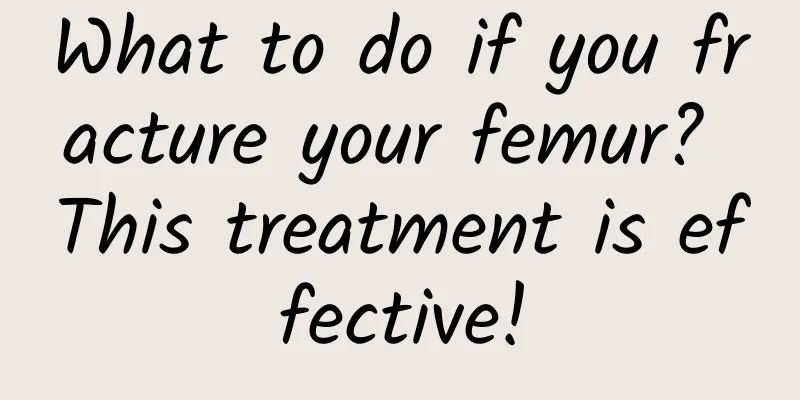What to do if you fracture your femur? This treatment is effective!

|
The femur is the connection between the leg bones and the pelvis. The bones here are used frequently and are in motion almost every moment. Therefore, the femur bears more responsibilities than other bones. Moreover, the femoral head also plays the role of connecting the upper and lower body, and almost bears the weight of the entire upper body. Therefore, femoral cases are very common symptoms in life. For example, femoral fractures are relatively common and can easily cause significant trauma to people's bodies, with a high possibility of causing paralysis in patients. Below is an introduction to the treatment of femoral fractures. (1) Suspension traction is used for children under 4 to 5 years old. Use skin traction to suspend both lower limbs upward with a weight of 1 to 2 kg. Keep the buttocks off the bed and use body weight to counteract traction. After 3 to 4 weeks when callus formation is observed on X-rays, traction is removed and the patient begins to move the affected limb in bed, with weight bearing allowed after 5 to 6 weeks. For children's femoral shaft fractures, good alignment is required, and successful reduction is only required without insisting on anatomical reduction. If the angle does not exceed 10° and the overlap does not exceed 2 cm, the future function will generally not be affected. During traction, in addition to keeping the buttocks off the bed, you should also pay attention to the blood circulation of the feet and the tightness of the bandage, and make timely adjustments to prevent ischemia and necrosis of the toes. (2) Dynamic pulley skin traction (Rosso's traction method) is suitable for children aged 5 to 12 years old. Place a soft pillow under the knee to flex the knee, use a wide cloth belt to pull upward on the popliteal fossa, and at the same time perform skin traction on the calf so that the resultant force in the two directions is in a straight line with the longitudinal axis of the femoral shaft. The resultant traction force is twice the traction weight. Sometimes the affected limb can be placed on a Thomas splint and a Pearson connecting frame for sliding traction. Manual reduction can be performed before traction, or traction can be used for reduction. (3) Balanced traction is used for femoral shaft fractures in adolescents and adults. Insert the needle at the tibial tuberosity. If there is a wound, insert the needle (Kirschner wire or Steinmann wire) at the femoral condyle. The affected limb is placed on a Thomas clamp for balanced traction, which has both reduction and fixation functions. |
<<: What is the best way to treat hydronephrosis?
>>: What are the methods for treating high uric acid?
Recommend
What should not be eaten in patients with vascular Parkinson's syndrome
It seems that the disease comes all of a sudden a...
Symptoms of excessive liver fire
Excessive liver fire is quite common in life, mai...
What are the common symptoms of acute pharyngitis?
Pharyngitis is a relatively common throat disease...
What are the effects and functions of tangerine peel pillow?
What does a person spend the most time doing in h...
Disadvantages of taking a shower after vaccination
You cannot take a shower on the same day after ge...
Young and sick
Nowadays, many young people are almost always sic...
Obsessive-compulsive amnesia
In life, many people, in order to relieve their w...
Bone marrow hematopoietic dysfunction
Everyone knows that bone marrow has the function ...
Ozone for lumbar disc herniation
Lumbar disc herniation has become a very common d...
Is zinc gluconate effective in treating acne?
Zinc gluconate is a common drug that has a certai...
The efficacy and function of wine soaked ginger slices
Ginger slices soaked in wine are also quite commo...
The child has hand, foot and mouth disease but no fever
It is actually normal for children not to have a ...
Pictures of cattle tendon grass and their effects
There is a kind of weed in the countryside, calle...
What causes intermittent pain on the right side of the head?
Headache is a very common physical disease in dai...
How to treat facial depression
In this age of appearance justice, face is someth...









